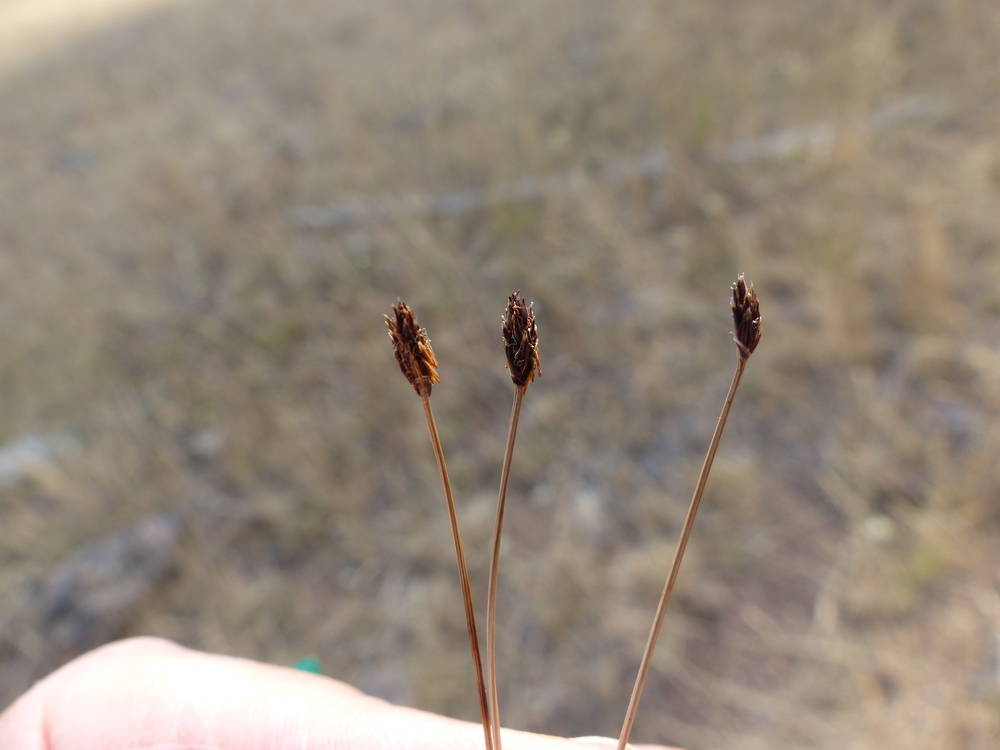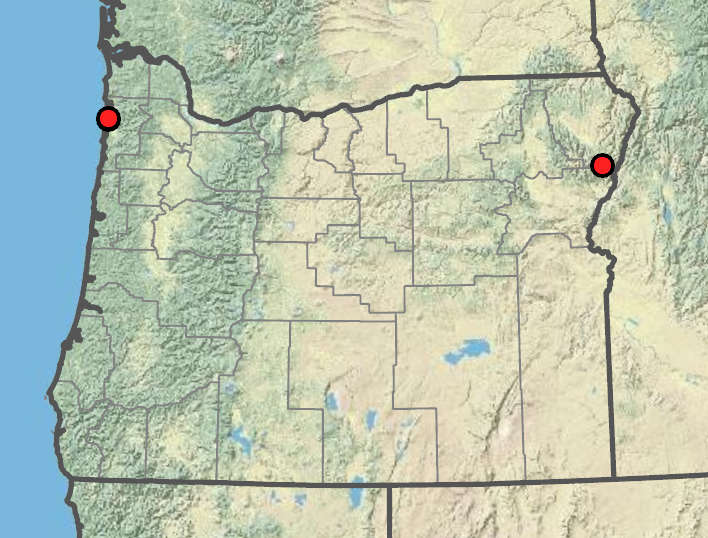Eleocharis bolanderi
Eleocharis parvula
Bolander's spikerush
small spikerush
subterete, 10–30 cm × 0.3–0.5 mm.
terete, 2–9 cm × 0.2–0.5 mm.
ovoid, 3–8 × 2–3 mm;
proximal scale clasping; entire, subproximal scale with flower; floral scales 8–30, 4–5 per mm of rachilla, 2–3 × 1.5 mm;
apex entire; acute, often keeled in distal part of spike.
2–4 × 1–2 mm;
proximal scale 50% or more of spike length; floral scales 6–10 per spike, 1.4–2.7 mm;
apex rounded to subacute.
perianth bristles 3–6, often unequal; from rudimentary to 50% of achene length;
anthers 0.9–1.4 mm;
stigmas 3.
perianth bristles 6, usually equaling achene to slightly exceeding tubercle, sometimes unequal and some 50% of achene; very rarely rudimentary;
anthers 0.7–1.2 mm;
stigmas (2)3.
slightly to greatly compressed-trigonous, rarely thickly lenticular, 0.9–1.2 × 0.65–0.8 mm.
thickly trigonous, 0.9–1.2 × 0.55–0.75 mm.
persistent, not splitting;
apex obtuse, rarely hardened, lacking a tooth.
often disintegrating, thinly membranous;
apex rounded.
flat to shallowly pyramidal; lower than wide, 0.1–0.3 × 0.4–0.65 mm.
0.1–0.2 × 0.15 mm.
Eleocharis bolanderi
Eleocharis parvula
Shallow, rocky, ephemeral streams. 1100–2100 m. BR, BW, Owy. CA, NV, ID; east to CO. Native.
Eleocharis bolanderi is easily recognized in summer when it forms masses of dry, brown, dormant and apparently dead culms in dry stream beds. It is easily pulled up to expose its cespitose habit. The virtually flat tubercles are particularly distinctive.
Brackish or saline tidal marshes and other coastal wetlands. 0–50 m. Est. CA, WA; throughout much of North America; Eurasia. Native.
When growing submerged in deeper water, the plants may not produce spikes and can be confused with E. acicularis and Schoenoplectus subterminalis.
Barbara Wilson, Richard Brainerd, Nick Otting
Barbara Wilson, Richard Brainerd, Nick Otting
- Local floras:
CA,
OR,
WA
- Local Web sites:
CalFlora,
CalPhotos,
Flora NW,
PNW Herbaria
WildflowerSearch
iNaturalist (observations)
USDA Plants Database
- LBJ Wildflower Center
- SEINet
- Plants of the World Online
- Encyclopedia of Life
- Wikipedia
- Google Image Search
- Local floras:
BC,
CA,
OR,
WA
- Local Web sites:
CalFlora,
CalPhotos,
Flora NW,
PNW Herbaria
WildflowerSearch
iNaturalist (observations)
USDA Plants Database
- LBJ Wildflower Center
- SEINet
- Plants of the World Online
- Encyclopedia of Life
- Wikipedia
- Google Image Search




